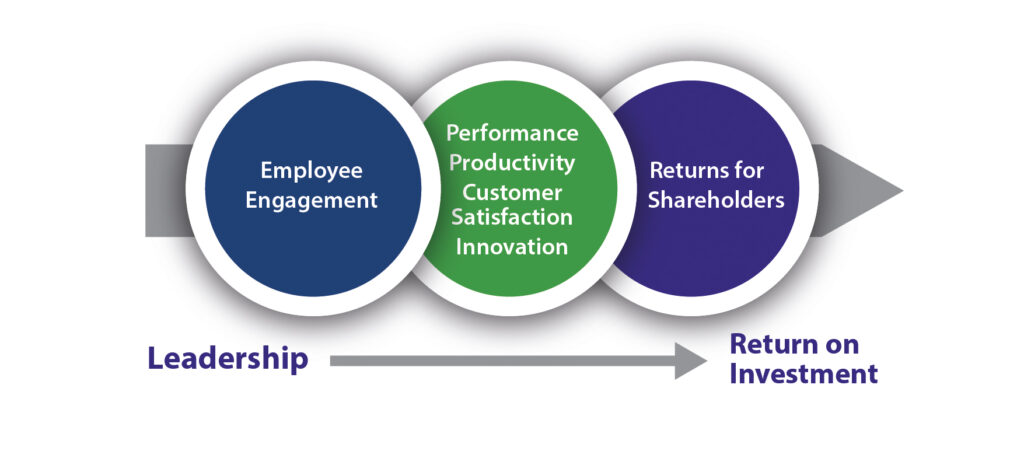When you’re growing a company, your priority is having the technical skills to deliver for the client. So that’s what companies focus on. They don’t think about leadership skills. But that’s a mistake. To grow a successful company, you need to retain valued employees. And that means you need leadership throughout the organisation. Even if employees don’t manage others they need leadership skills. They need to lead themselves, lead projects, influence the client and help lead the growth and development of their area of the business.
Why leadership development is important
Looking around your organisation you might find it hard to see any need or urgency for leadership development. Maybe you see that everyone is working hard, the business is doing well and you’re not losing too many staff. Why worry about developing leaders when there is so much else to do?
But what if I told you there might be trouble lurking beneath the surface? That not taking steps now might result in massive issues in the not too distant future? The Titanic left it too late to steer away from the iceberg, most of which it couldn’t see.
Not developing your leaders might be fine if you want to stay small. If not, it will stunt your growth.
There is a clear connection between the quality of an organisation’s leadership and employees’ plans. Leadership influences whether employees stay with an organisation, perform well and apply discretionary effort.

For example, one of my clients is a professional services firm. They have been hugely successful growing by double digits, year on year. They were too busy for anything other than selling and delivering so they didn’t invest time and money in developing their leaders. And those leaders had little skills and experience. Then they ran into issues. They struggled to keep their good people. Attrition was at 25%. Feedback from exit interviews and the Employee Satisfaction Survey gave some clues. Employees felt they lacked career development and opportunities. Leaders didn’t feel valued and felt unsupported by the organisation. So, the company invested in a Manager Development programme for their mid-level leaders. The Programme consisted of a half-day workshop every month for twelve months. As a result, leaders reported they felt more confident and had tackled difficult challenges which they would have avoided in the past. They felt they had stepped up into the leadership role. Attrition had reduced from 25% to 9%.
Impact on the bottom line
Better leadership can improve an organisation’s bottom line by hundreds of thousands – or even millions – of dollars.
Putting off leadership development has a cost. You can manage successfully in the short-term but it takes its toll long-term. To avoid your company ending up in a crisis you need to take a step back and reflect on where you are.
Ask yourself:
How much money have you spent on leadership training and development?
How much time has the executive team spent discussing leadership issues and opportunities? Is it part of a regular meeting agenda? What decisions have you made? What actions have you taken?
Have many performance and development discussions taken place? How many career conversations have there been with current and future leaders?
Note: This post was based on and adapted from Grow Your Geeks. A Handbook for Developing Leaders in High-tech Organisations by Antoinette Oglethorpe
Take Action
Do you want to develop your leaders and address these challenges? If so, there’s no better start than my eBook, LEADER – Develop remarkable leaders who deliver amazing results.
In just a few pages you’ll discover six practical strategies for developing your leadership talent. You can download the report here.



